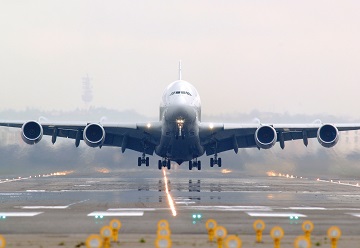
At the beginning of this week, the Civil Aviation Authority updated its website to add a section on EU Exit to cover its ongoing work on Brexit. ADS has been very closely involved with CAA planning, and we welcome this as a step towards providing greater clarity for the wider aerospace and aviation sectors.
Regular conference calls and workshops between the CAA and ADS airworthiness representatives held since March have been ensuring aerospace concerns are high on the list of CAA priorities. This has also been an opportunity for the CAA to test their planning and assumptions against industry knowledge and experience. Together, we have been working on a list of what industry, government and regulator will need to have achieved by 29th March 2019.
Whatever the outcome of the Brexit negotiations, either a negotiated Withdrawal Agreement or a No Deal Exit, it is clear that a good deal of regulatory work will be necessary to ensure continued safety and connectivity. This is an ADS priority, and runs in parallel with some of our other activities – such as the request to hold technical talks between EASA and the CAA that we made in the ADS and GAMA letter to Michel Barnier in June.
ADS members with questions or comments about our work with the CAA can get in touch with the ADS Airworthiness Board for further information through the ADS Airworthiness Manager: michael.dasilva@adsgroup.org.uk.
Summary of the CAA Brexit page
In time, the CAA website will be updated with further information. For the moment, it lays out its role in providing advice & assistance to the Government as it negotiates with the EU. This includes both the planned Withdrawal Agreement, and planning to take over EASA responsibilities in the event of No Deal – such as rebuilding the capacity to undertake State of Design approvals.
The webpage also lays out the assumptions the CAA is working on in the event of a No Deal Brexit:
EU relations with the UK
– No UK participation in the EASA system;
– UK excluded from EU Bilateral Air Service Agreements;
– UK airlines will be treated as third-country operators by the EU;
– There will be no mutual recognition agreement between the EU and UK for aviation licences, approvals or certificates;
– UK-issued EASA licences or approvals will be regarded as void by the EU.
Mitigating actions the UK will take
– UK will mirror EU aviation regulations for at least a two-year period;
– All CAA and EASA issued licences, approvals or certificates will remain valid under UK law after exit day, under the provisions of the EU Withdrawal Act;
– Minimisation of further additional UK requirements for EU aviation & aerospace companies operating in the UK.
Although it has been regularly discussed in forums with the CAA, this is the first time they have publicly recognised the extent of their thinking about a No Deal scenario. ADS is continuing to work with the CAA, to ensure that airworthiness and safety requirements continue to be met between the UK and the EU after the 29th of March 2019.





